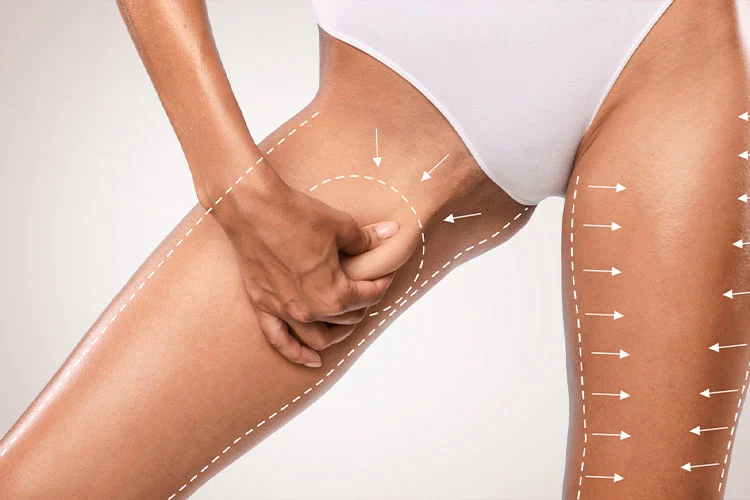The pursuit of a toned and harmonious physique often extends to areas highly susceptible to laxity, particularly the inner thighs. For many, diet and exercise alone prove insufficient in addressing stubborn fat deposits and excess skin in this region. The inner thigh lift, or medial thighplasty, stands as a pivotal surgical intervention designed to sculpt and redefine the contours of the upper legs, restoring firmness and proportion. This comprehensive guide provides an authoritative overview of the procedure, its benefits, considerations, and what prospective patients should know when evaluating their options.
Table of Contents
Understanding the Inner Thigh Lift
An inner thigh lift is a surgical procedure aimed at removing excess skin and fat from the inner thigh area. This common aesthetic concern often arises due to significant weight loss, the natural aging process, or genetic predisposition. When skin loses its elasticity, it can sag, creating discomfort, chafing, and an undesirable aesthetic appearance. The procedure effectively addresses these issues, resulting in smoother, tighter, and more proportionate thighs. It is crucial to approach this decision with a clear understanding of the surgical process, recovery, and potential outcomes.
Ideal Candidates for Inner Thigh Lift
Identifying suitable candidates is the first critical step in ensuring successful outcomes and patient satisfaction. Ideal candidates typically exhibit the following characteristics:
- Stable Weight: Candidates should be at a stable weight, as significant fluctuations post-surgery can compromise results. It is often recommended for individuals who have achieved their target weight and maintained it for several months.
- Excess Skin and Fat: The primary indication for an inner thigh lift is the presence of loose, sagging skin and/or localized fat deposits on the inner thighs that do not respond to diet or exercise.
- Good General Health: Patients must be in good overall physical health, free from medical conditions that could impair healing or increase surgical risks. A thorough medical evaluation by a qualified physician is essential.
- Realistic Expectations: Understanding the limitations and potential outcomes of the surgery is paramount. Patients should have realistic expectations regarding the improvements achievable and the presence of scarring.
- Non-Smokers: Smoking significantly impedes the healing process and increases complication risks. Candidates are typically advised to cease smoking several weeks before and after surgery.
Goals of Medial Thighplasty
The overarching goals of an inner thigh lift extend beyond mere aesthetic enhancement. They encompass:
- Contour Improvement: Achieving a smoother, more toned, and aesthetically pleasing contour of the inner thighs.
- Skin Tightening: Eliminating loose, sagging skin that contributes to an aged or disproportionate appearance.
- Enhanced Comfort: Reducing physical discomfort such as chafing, irritation, and hygiene issues often associated with excess skin folds.
- Improved Clothing Fit: Allowing patients to wear a wider range of clothing styles with greater confidence and comfort.
- Boosted Self-Confidence: Significantly enhancing a patient’s self-esteem and body image.
The Inner Thigh Lift Procedure
An inner thigh lift is performed under general anesthesia and typically involves incisions strategically placed to minimize visible scarring while maximizing skin removal. The specific technique employed will depend on the extent of skin laxity and the patient’s anatomical considerations.
Surgical Techniques
Various techniques are utilized, each tailored to the individual’s needs:
- Minimal Incision (Limited Incision) Thigh Lift: For patients with moderate skin laxity primarily near the groin, a shorter incision confined to the groin crease may suffice. This technique primarily addresses the upper inner thigh.
- Extended Incision Thigh Lift: For more significant skin excess extending down the thigh, an incision may run from the groin crease down to the knee along the inner thigh. This allows for more comprehensive skin removal and tightening.
- Vertical Thigh Lift: In cases of substantial skin excess and fat, particularly after massive weight loss, a vertical incision along the inner thigh, from the groin to above the knee, may be necessary. While this offers the most dramatic correction, it results in a more noticeable scar.
Liposuction may be performed in conjunction with a thigh lift to remove localized fat deposits and further enhance contour, particularly in areas where skin elasticity is sufficient for retraction post-liposuction. A study by Li and Fan (2018) highlighted the efficacy of modified medial thigh lift techniques in correcting severe medial thigh laxity, emphasizing the importance of tailored surgical approaches for optimal aesthetic and functional outcomes. This research underscores that meticulous surgical planning and execution are crucial for addressing complex cases effectively while managing scar visibility.
Recovery and Post-Operative Care
Recovery from an inner thigh lift requires patience and adherence to post-operative instructions to ensure optimal healing and results. The initial phase of recovery is the most intensive, gradually transitioning to less restrictive activities.
Immediate Post-Operative Period
- Pain Management: Patients will experience discomfort and swelling, managed with prescribed pain medication.
- Drainage Tubes: Small drainage tubes may be placed to collect excess fluid, typically removed within a few days to a week.
- Compression Garments: A compression garment must be worn continuously for several weeks to reduce swelling and support the newly contoured thighs.
- Activity Restrictions: Strenuous activities, heavy lifting, and prolonged standing or sitting should be avoided. Gentle walking is encouraged to promote circulation and prevent blood clots.
Long-Term Recovery Timeline
- Week 1-2: Significant swelling and bruising are common. Most patients can return to light, non-strenuous work, provided it does not involve prolonged standing or heavy lifting. Pain should be manageable with medication.
- Month 1-3: Swelling will gradually subside, and the thighs will begin to take on their new shape. Most restrictions on physical activity are lifted, though strenuous exercise should still be approached cautiously. Scarring will be noticeable and may appear red or raised.
- Month 6-12: Swelling should have resolved completely, revealing the final contours. Scars will continue to fade and flatten, though they will be permanent. Adherence to scar care recommendations is vital.
Potential Risks and Complications
As with any surgical procedure, an inner thigh lift carries potential risks, although serious complications are rare when performed by a qualified and experienced plastic surgeon. These include:
- Infection
- Bleeding (hematoma)
- Seroma (fluid accumulation)
- Poor wound healing or skin necrosis
- Numbness or altered sensation
- Asymmetry
- Persistent swelling
- Unfavorable scarring
- Deep vein thrombosis (DVT) or pulmonary embolism
A thorough discussion with your surgeon about these risks and how they are mitigated is an essential part of the consultation process.
Benefits of Inner Thigh Lift
The advantages of undergoing an inner thigh lift are both aesthetic and functional, significantly impacting a patient’s quality of life.
- Improved Thigh Contour: Achieves a firmer, more toned appearance of the inner thighs.
- Reduced Chafing: Eliminates the uncomfortable skin-on-skin friction that often occurs with excess skin.
- Enhanced Comfort and Hygiene: Makes physical activity more comfortable and improves ease of hygiene.
- Increased Confidence: Patients often report a significant boost in self-esteem and body image, allowing them to feel more comfortable in various types of clothing and social situations.
- Long-Lasting Results: With stable weight and a healthy lifestyle, the results of an inner thigh lift can be enduring.
Inner Thigh Lift: Turkey vs. United Kingdom
Patients from the United Kingdom increasingly explore international options for cosmetic surgery, with Turkey emerging as a prominent destination. This trend is largely driven by significant cost differentials, combined with access to highly skilled surgeons and modern medical facilities. For those considering procedures such as Thigh Lift Surgery in Turkey or general Plastic Surgery in Turkey, the value proposition is often compelling.
| Service | Turkey Price (USD) | United Kingdom Price (GBP) |
|---|---|---|
| Inner Thigh Lift | $4,500 – $6,000 | £6,000 – £9,000 |
| Full Thigh Lift | $5,000 – $7,500 | £7,000 – £10,500 |
| Liposuction (Thighs) | $2,000 – $3,500 | £3,000 – £5,000 |
| Arm Lift | $3,500 – $5,000 | £5,000 – £7,500 |
| Breast Lift | $4,000 – $6,500 | £6,000 – £9,000 |
*Note: These prices are estimates and can vary based on surgeon’s fees, clinic facilities, complexity of the case, and included services.* For comprehensive information on how we work, you can visit How Do We Work.
CK Health Turkey: Your Partner in Aesthetic Transformation
At CK Health Turkey, we understand the profound impact that aesthetic enhancements can have on an individual’s confidence and well-being. Specializing in advanced plastic and reconstructive surgery, we are a premier choice for international patients seeking exceptional care. Our facility is equipped with state-of-the-art technology, and our team comprises highly experienced, board-certified surgeons dedicated to achieving superior patient outcomes. We pride ourselves on offering comprehensive packages that include detailed consultations, surgical procedures, post-operative care, and logistical support for our international clientele.
Choosing CK Health Turkey for your inner thigh lift means entrusting your care to professionals who prioritize safety, precision, and personalized attention. We ensure a seamless experience from your initial inquiry through to your full recovery, providing transparent communication and tailored treatment plans. For a confidential consultation to explore your inner thigh lift options and understand how we can facilitate your journey, please contact us or visit our website to learn more about our services.
Restoring the youthful contours of the inner thighs is a transformative journey that demands careful consideration, expert guidance, and a commitment to post-operative care. By understanding the intricacies of the inner thigh lift procedure, discerning appropriate candidates, and being aware of the recovery process and potential risks, individuals can make informed decisions. The decision to undergo such a procedure should be made in consultation with a qualified plastic surgeon who can assess individual needs and develop a personalized treatment plan. With realistic expectations and diligent adherence to medical advice, the pursuit of firmer, more aesthetically pleasing thighs is an achievable goal, significantly enhancing both physical comfort and self-confidence.
FAQs
How long does an inner thigh lift procedure take?
The surgery typically takes 2 to 3 hours, depending on the complexity of the case and whether it is combined with other procedures like liposuction.
What kind of anesthesia is used for an inner thigh lift?
An inner thigh lift is generally performed under general anesthesia, ensuring you are completely asleep and comfortable throughout the procedure.
When can I see the final results?
Initial results are visible immediately, but the final contours will become apparent as swelling subsides over several weeks to months, typically by 6 months post-surgery.
Are the scars from an inner thigh lift permanent?
Yes, the incisions result in permanent scars. However, surgeons strategically place them in discreet areas, such as the groin crease, to minimize visibility. Scar quality improves significantly over 12-18 months.
How much time off work will I need after an inner thigh lift?
Most patients require 1 to 2 weeks off from work, depending on the nature of their job. Those with physically demanding jobs may need more time.
Can I combine an inner thigh lift with other procedures?
Yes, an inner thigh lift is often combined with other body contouring procedures, such as a full tummy tuck, arm lift, or liposuction, especially for patients who have undergone massive weight loss.
What should I avoid before inner thigh lift surgery?
You should avoid smoking for at least 4-6 weeks prior to surgery. Additionally, discontinue certain medications, like aspirin and anti-inflammatory drugs, and herbal supplements that can increase bleeding, as advised by your surgeon.
How can I maintain my results long-term?
Maintaining a stable weight through a healthy diet and regular exercise is crucial for preserving the results of your inner thigh lift. Protecting your skin from sun exposure can also help maintain skin elasticity.



